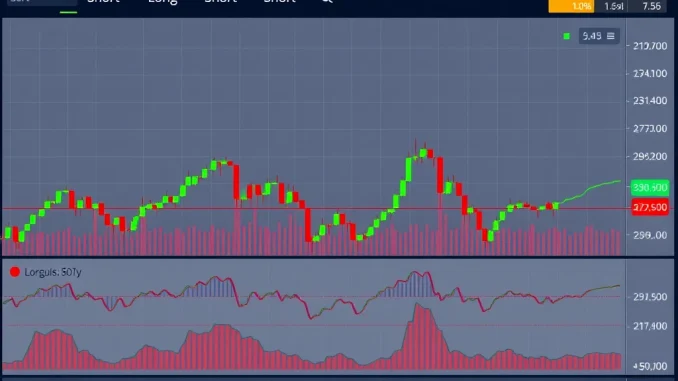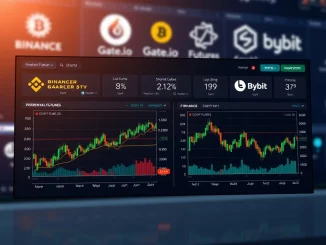
Understanding the pulse of the market is vital for successful Bitcoin trading. One key metric traders watch closely is the long short ratio, particularly for derivatives like BTC perpetual futures. This ratio provides a snapshot of prevailing market sentiment, indicating whether traders are leaning more towards betting on price increases (long) or decreases (short).
Understanding the BTC Perpetual Futures Long Short Ratio
The long short ratio is a simple yet powerful indicator derived from the world of crypto futures trading. Specifically for BTC perpetual futures, it measures the proportion of open long positions versus open short positions on an exchange over a defined period, like the past 24 hours. A ratio above 1 (or where long percentage is > 50%) suggests more traders are positioned for a price rise, indicating a potentially bullish bias. Conversely, a ratio below 1 (or where short percentage is > 50%) points to a bearish bias.
Decoding 24-Hour Bitcoin Trading Sentiment
Looking at the recent 24-hour data for BTC perpetual futures reveals the immediate sentiment among traders. Here’s a breakdown of the long-short ratios across major exchanges:
- Total Market: Long 50.51%, Short 49.49%
- Binance: Long 50.54%, Short 49.46%
- OKX: Long 51.07%, Short 48.93%
- Bybit: Long 50.57%, Short 49.43%
What does this tell us about current Bitcoin trading? The overall market and the top exchanges show a slight lean towards long positions. However, the ratios are remarkably close to 50/50. This suggests a relatively balanced, perhaps indecisive, market sentiment over the last day. While there’s a fractional bullish edge, it’s not a strong directional signal on its own.
Why Crypto Futures Data Matters for Market Sentiment
Data from crypto futures markets, including the long short ratio for assets like BTC perpetual futures, is valuable for several reasons:
- Sentiment Gauge: It offers a direct view into the collective expectations of leveraged traders.
- Liquidity Hub: Futures markets are highly liquid, and shifts here can sometimes precede or amplify movements in the spot market.
- Potential Reversals: Extreme imbalances in the ratio can sometimes signal potential reversals, though this is a more advanced interpretation requiring caution.
Monitoring this data is a component of a comprehensive Bitcoin trading strategy.
Applying Long Short Ratio Insights
While the long short ratio is a useful tool, it shouldn’t be used in isolation. For effective Bitcoin trading, consider these actionable insights:
- Context is Key: Compare the current ratio to historical data and recent trends. Is the slight long bias increasing or decreasing?
- Look Across Exchanges: Significant divergence in ratios between major platforms could indicate localized activity or data anomalies. The current data shows consistency across top exchanges.
- Combine with Other Indicators: Use the ratio alongside technical analysis (like support/resistance levels, moving averages) and other on-chain metrics for a more complete picture of market sentiment.
- Understand Limitations: The ratio reflects open positions, not trading volume. Large institutional players might influence the ratio differently than retail traders.
For traders engaging with BTC perpetual futures or simply interested in understanding leveraged market sentiment, this data provides a piece of the puzzle.
Summary
The 24-hour long short ratio for BTC perpetual futures indicates a finely balanced market sentiment, with a slight lean towards long positions across major exchanges like Binance, OKX, and Bybit. This data is a valuable input for understanding the current climate in Bitcoin trading and the expectations embedded within crypto futures markets. While no single metric guarantees trading success, integrating insights from the long short ratio into a broader analysis framework can help traders navigate the dynamic crypto landscape.



